Charles Rennie Mackintosh brought a completely new style to the architecture and design of the early 20th century. His “Glasgow Style” soon became world-famous. But his life was tragic.
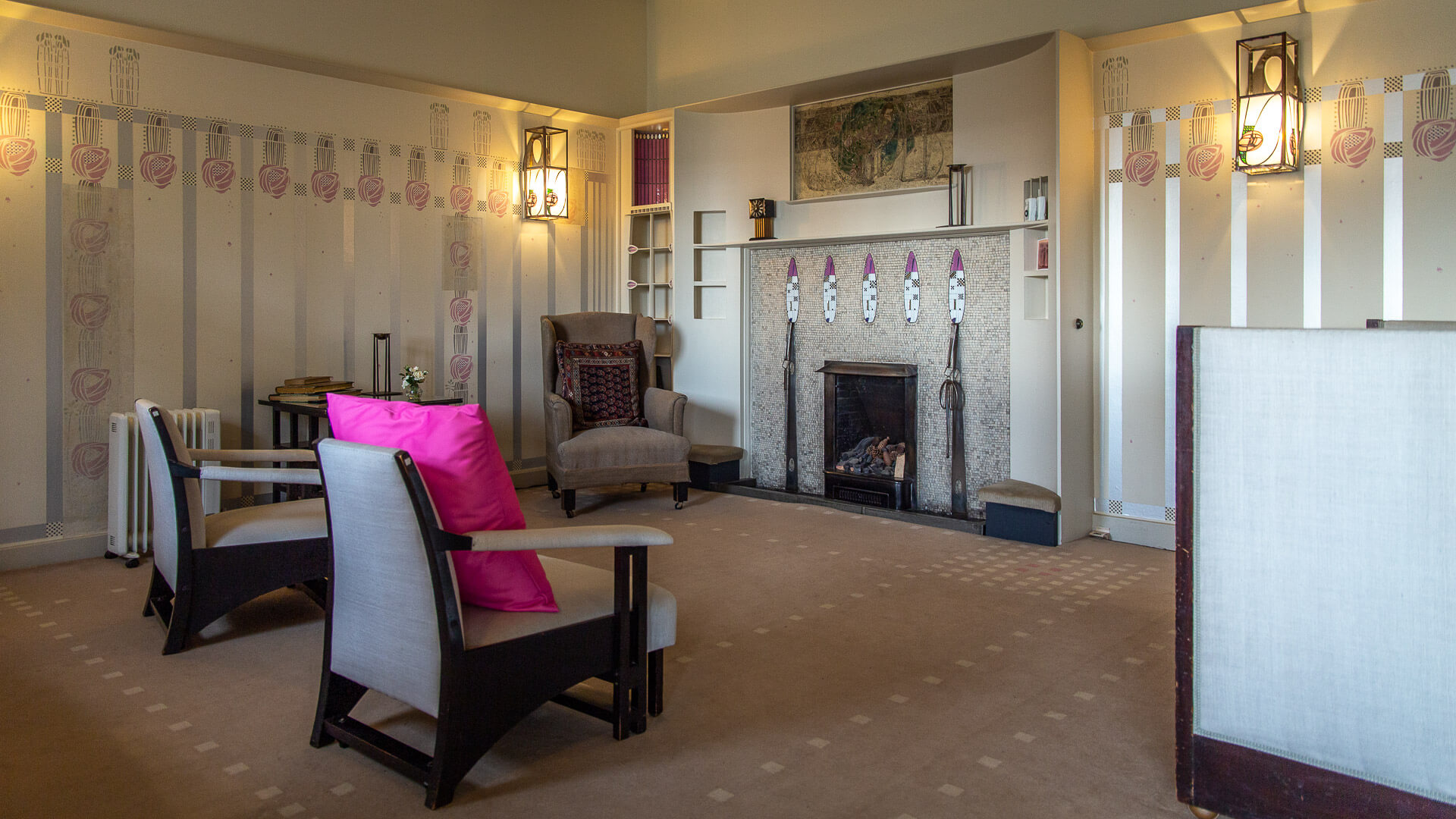
Contents
Charles Rennie Mackintosh is one of the most important representatives of Scottish architecture and design. Even before Art Nouveau really took off in Europe at the end of the 19th century, he was already pursuing a style that was free of frills and instead favoured clear lines and elegant curves as well as a healthy sense of function.
For him, design permeated his entire life: From façades to bed linen, from lampshades to seating furniture – Mackintosh subjected everything to his sense of shapes, colours and graphics. The work of this exceptional artist thus heralded the beginning of modern architecture.
Life: The work of Charles Rennie Mackintosh
Charles Rennie Mackintosh was born in Glasgow on 7 June 1868. His father came from the Highlands and was a well-paid police officer, while his mother came from the Scottish Lowlands. Charles was the second of eleven children in the family. And he didn’t have it easy. A shortened tendon caused him to walk with a limp. An inflammation in his eye caused one eyelid to hang a little lower than the other for the rest of his life.
His father was also a keen hobby gardener, which is how Charles learnt to love organic shapes. It was clear to him quite early on that he wanted to become an architect and designer and he began an apprenticeship at the age of 16. He also continued his education at the Glasgow School of Art – the institution whose buildings he was soon allowed to help design himself.
In addition to the Celtic influences of his homeland, he was fascinated by the forms and artworks of Japan – both of which were to have a strong influence on his work. However, he soon left behind the exuberant and ornate style of his time. He was more interested in simplicity and symbolism. The image of the rose as love appears again and again. Perhaps also a tribute to his father’s nursery.
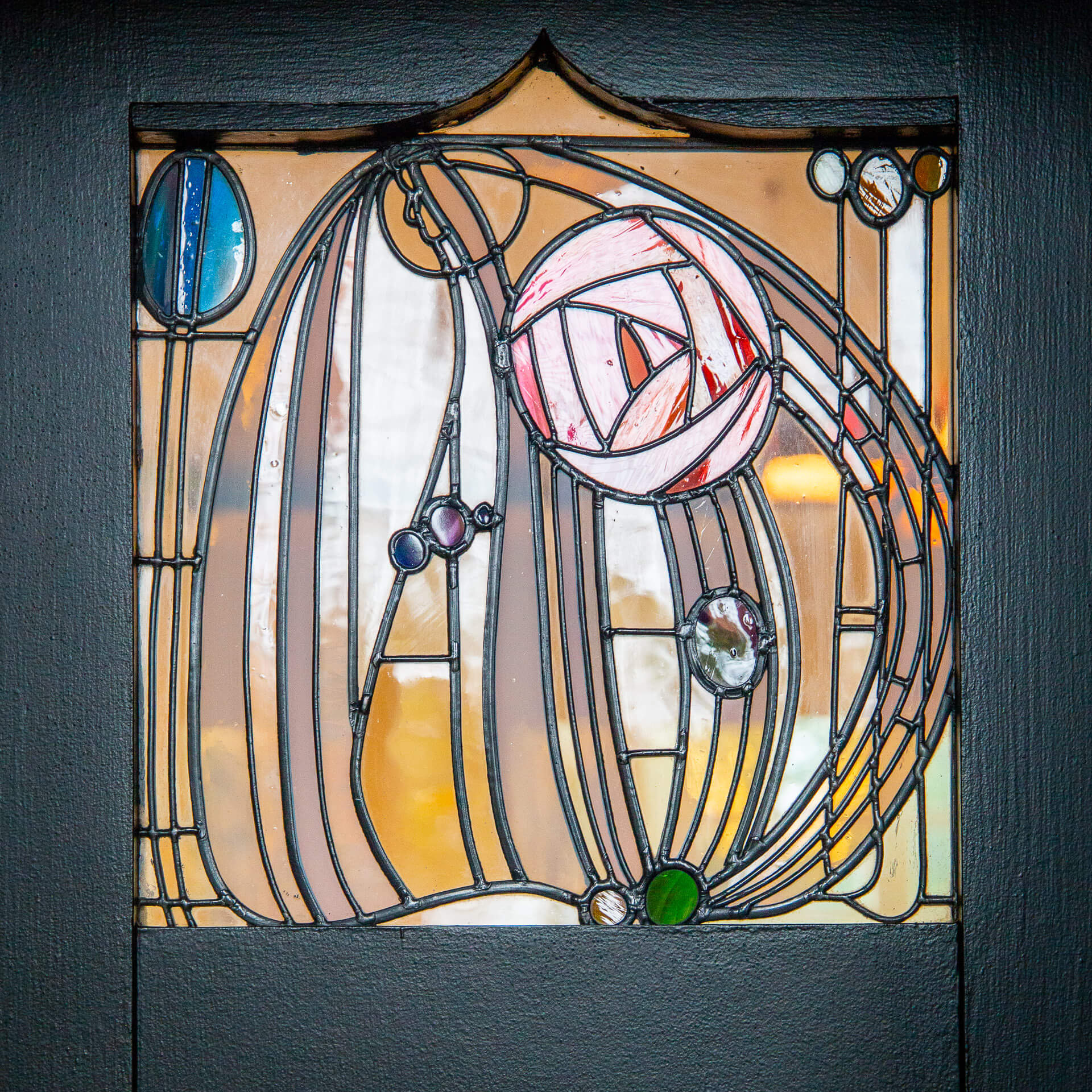
While studying at the School of Art, Mackintosh teamed up with three other students who had very similar ideas: J. Herbert MacNair and the sisters Frances and Margaret Macdonald. The four soon became known as the Glasgow Four as they exhibited together.
And he worked as a draughtsman for “Honeyman and Keppie”. There, for example, he was involved in the interior design of the Glasgow Art Club.
In 1900, the Glasgow Four were invited to the 8th exhibition of the Vienna Secession – an important source of inspiration for Art Nouveau and Modernism. Here they exhibited the Scottish Room, which was highly praised by the critics.
macNair had already married Frances in 1898, and Mackintosh married Margaret Macdonald in 1900. Although she is not always named, she had a considerable influence on the work – many of the designs were her own. Charles knew this when he said:
“Margaret is a genius, I have only talent.”
Incidentally, Margaret was four years older than her husband. Their marriage remained childless.
in 1909, he completed the Glasgow School of Art building. It is considered his masterpiece. However, he was probably already addicted to alcohol at the time. Although highly praised by some artists, the demand for his projects was quite low.
in 1915, the Mackintosh couple moved to London. Here, too, they were unable to establish themselves professionally. in 1923, they were so short of money that they went to France to live more cheaply.
they returned in 1927 for health reasons. Charles was diagnosed with tongue cancer. He died on 10 December 1928 at the age of 60. Margaret lived in France for another five years before she too left this world.
It was only a few years later that posterity recognised the genius of the Mackintosh couple. And today, a great deal is being done to preserve the legacy of the Glasgow style.
Places of interest: The works of Charles Rennie Mackintosh
Of course, an architect also leaves behind plenty of sights worth seeing. So that you can follow in the footsteps of Charles Rennie Mackintosh, here are the designer’s most interesting sights. Many of them are located in Glasgow, the city of his birth. At least the Lighthouse and the Tea Rooms in Buchanan Street are very centrally located and can be combined with a stroll through the pedestrianised area.
The Lighthouse Glasgow, 1895
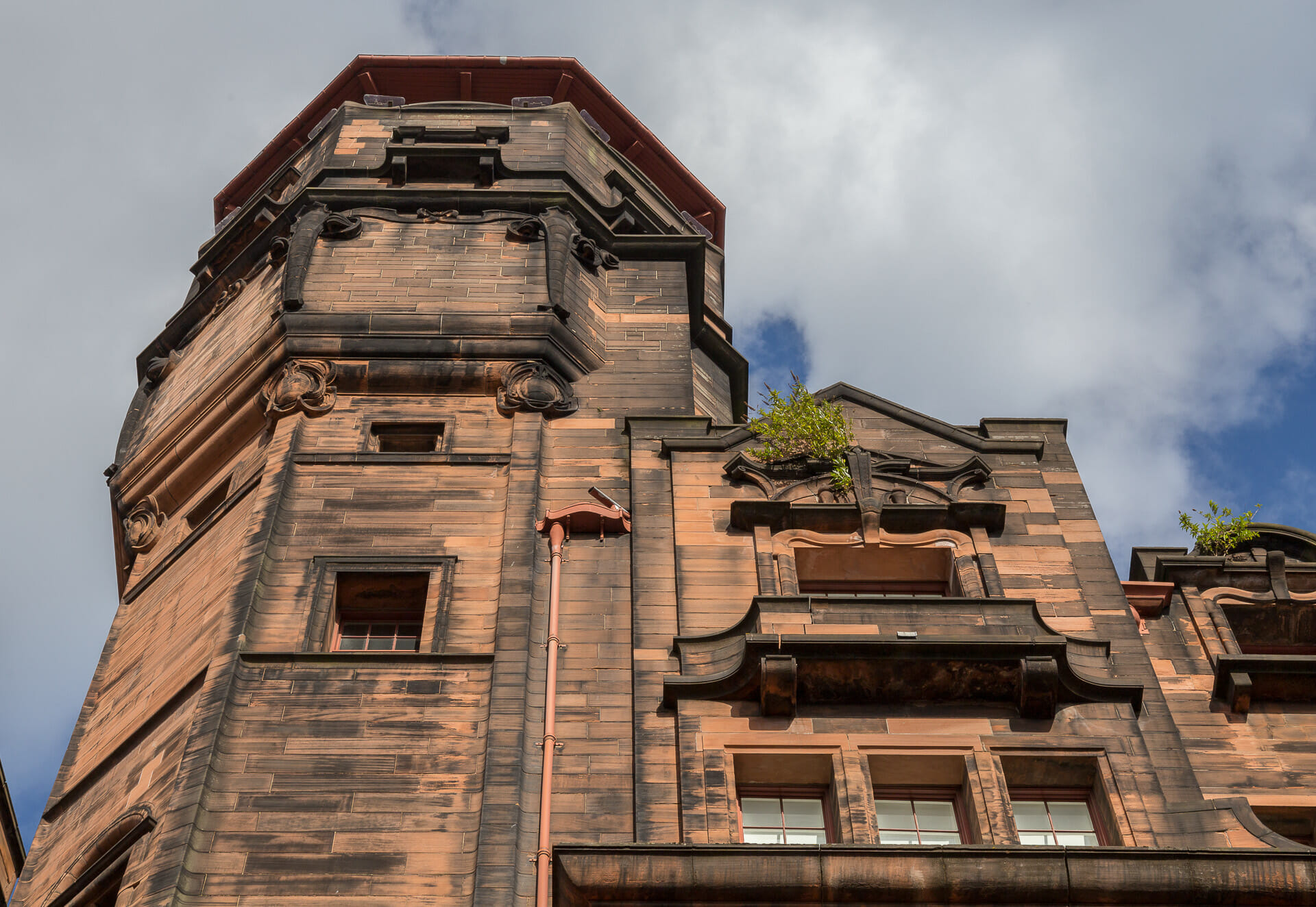
One of Mackintosh’s early works of architecture in the centre of Glasgow. Inside the building there is a permanent exhibition on Charles Rennie Mackintosh. Art workshops can also be organised here.
Visit the Glasgow Lighthouse website.
Tea Rooms, 1896 – 1917
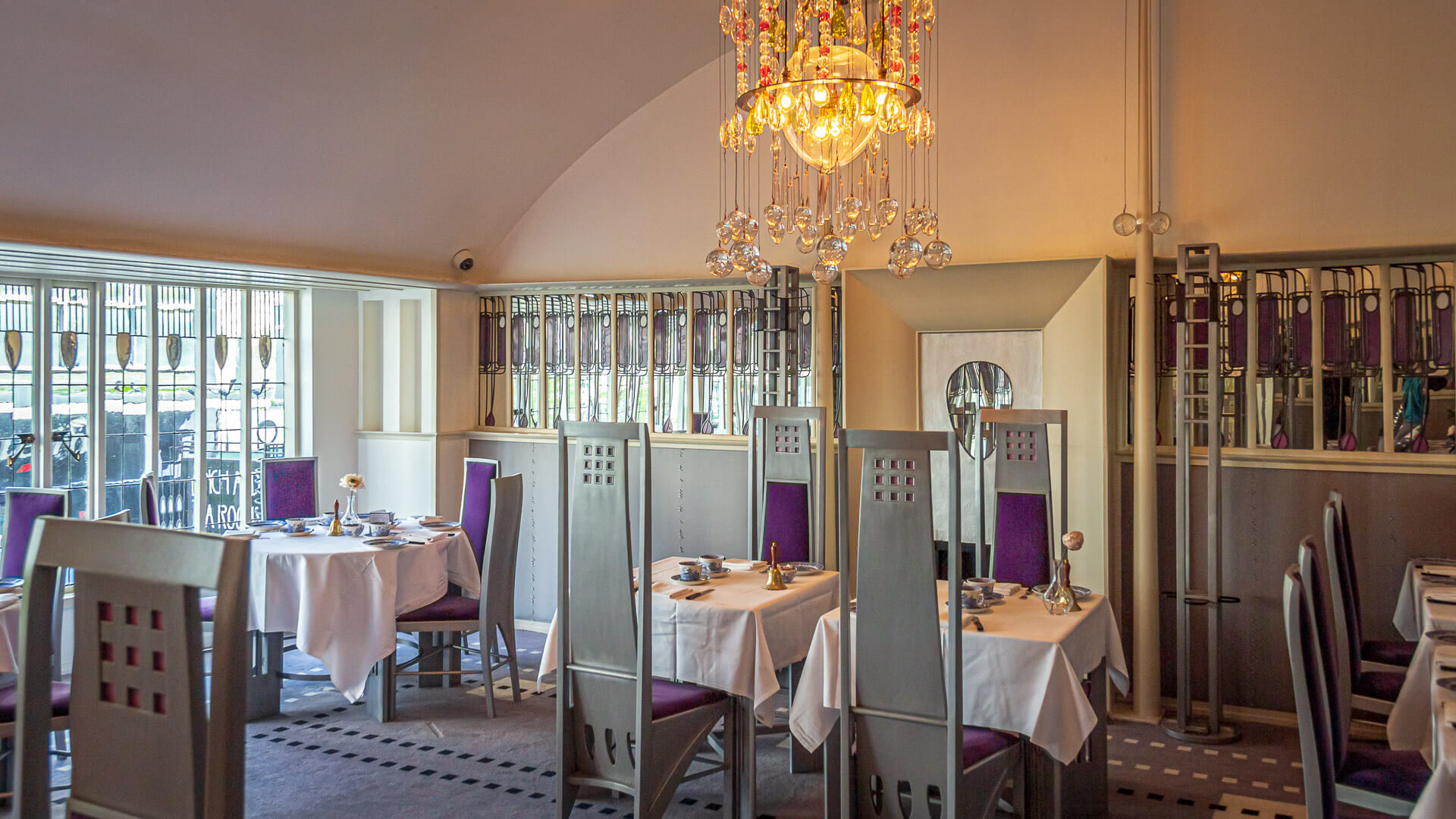
in 1896, Catherine Cranston, the daughter of a tea merchant, met Charles Rennie Mackintosh. Cranston opened four tea rooms in the following years. Her aim was to create a meeting place for people without the consumption of alcohol. It is not without bitter irony that Charles Rennie Mackintosh, who clearly had a drinking problem, created the entire design for the Willow Tearooms in Sauchiehall Street together with his wife Margaret MacDonald.
Mackintosh was involved in a total of four tea rooms:
- Buchanan Street Tea Rooms – At 91-93 Buchanan Street, he contributed wall decorations
- Argyle Street Tea Rooms – At number 114 he took care of the furniture
- Ingram Street Tea Rooms – Complete interior design. It is now in the Kelvingrove Museum
- Willow Tea Rooms – Mackintosh designed the entire tea room in Sauchiehall Street
The Willow Tea Rooms in Sauchiehall Street were completely restored in 2017. For naming reasons, however, they are now called “Mackintosh at the Willow”. Pictures and information about the new tearoom here.
The Willow Tea Rooms at 97 Buchanan Street bear the original name and their interior is inspired by the design of Ingram Street.
House for an Art Lover, 1901
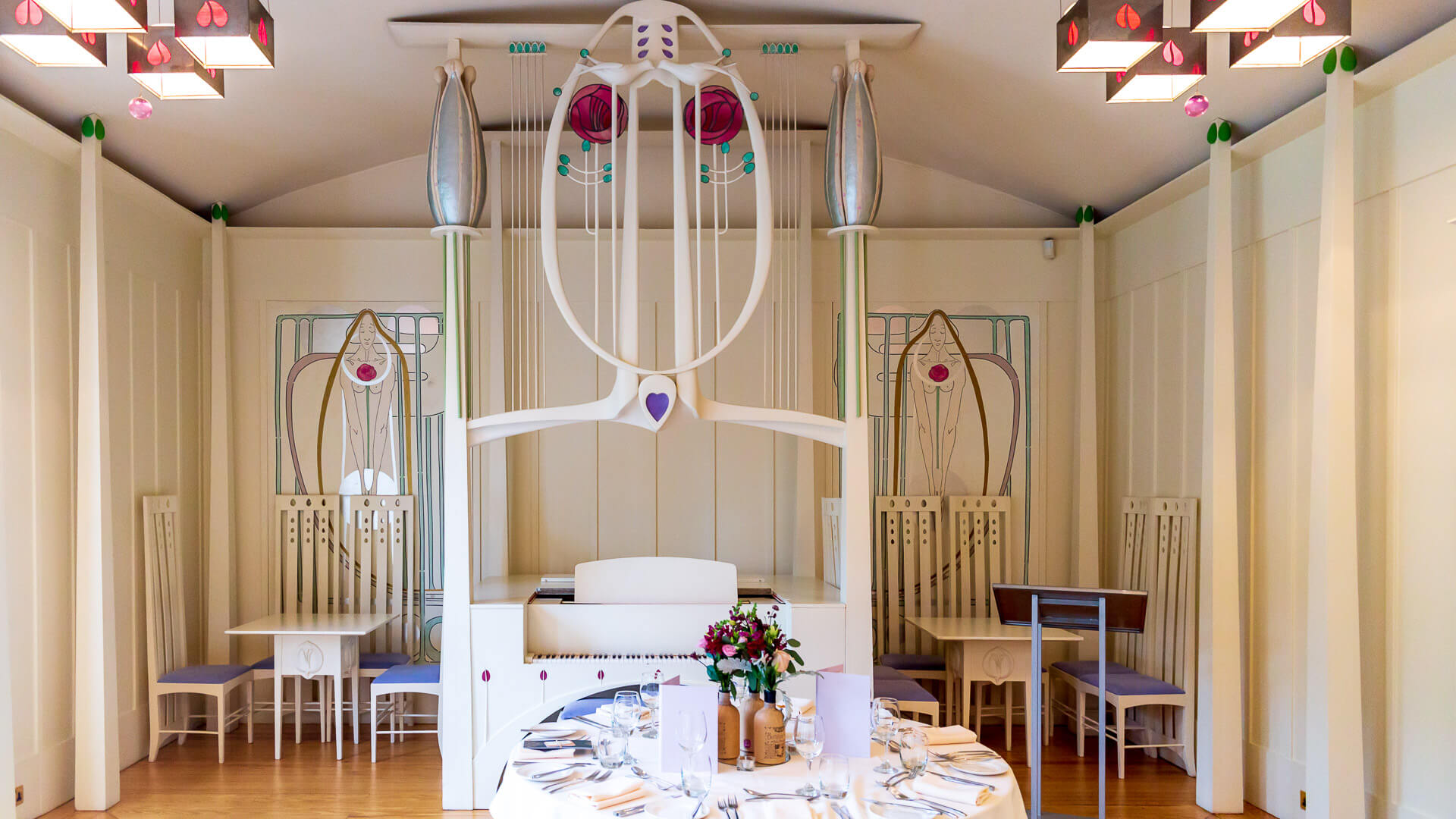
in 1901, Mackintosh and his wife Margaret Macdonald took part in a competition to design the “House for an Art Lover”. The competition was organised by the German “Zeitschrift für Innendekoration”. However, Mackintosh did not submit the designs properly, which led to his disqualification from the competition. At the same time, however, the judges praised him beyond all measure, thus establishing his international fame. The designs were realised in 1996 in the House for an Art Lover in Glasgow.
More information about the House for an Art Lover here.
Hill House, 1902 – 1903
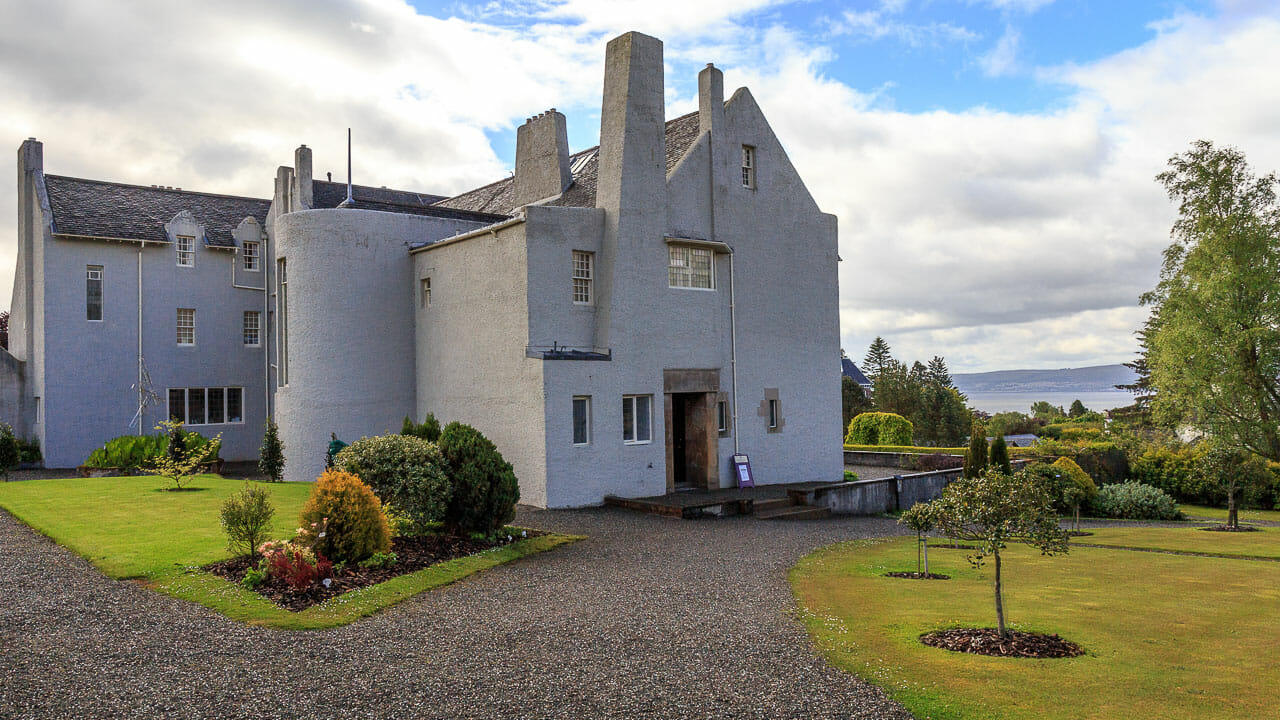
In 1902, publisher Walter Blackie was looking for an architect for his home. He found what he was looking for in Charles Rennie Mackintosh. He was actually allowed to take on the entire design. He promptly planned the house “from the inside out” – which was absolutely unusual at the time. Otherwise, architects always started with the floor plan and façade. mackintosh completed his work here in 1903. It is one of the best examples of his art and the interior is still original.
Read more about the Hill House here.
Hunterian Art Gallery, The Mackintosh House, 1906 – 1914
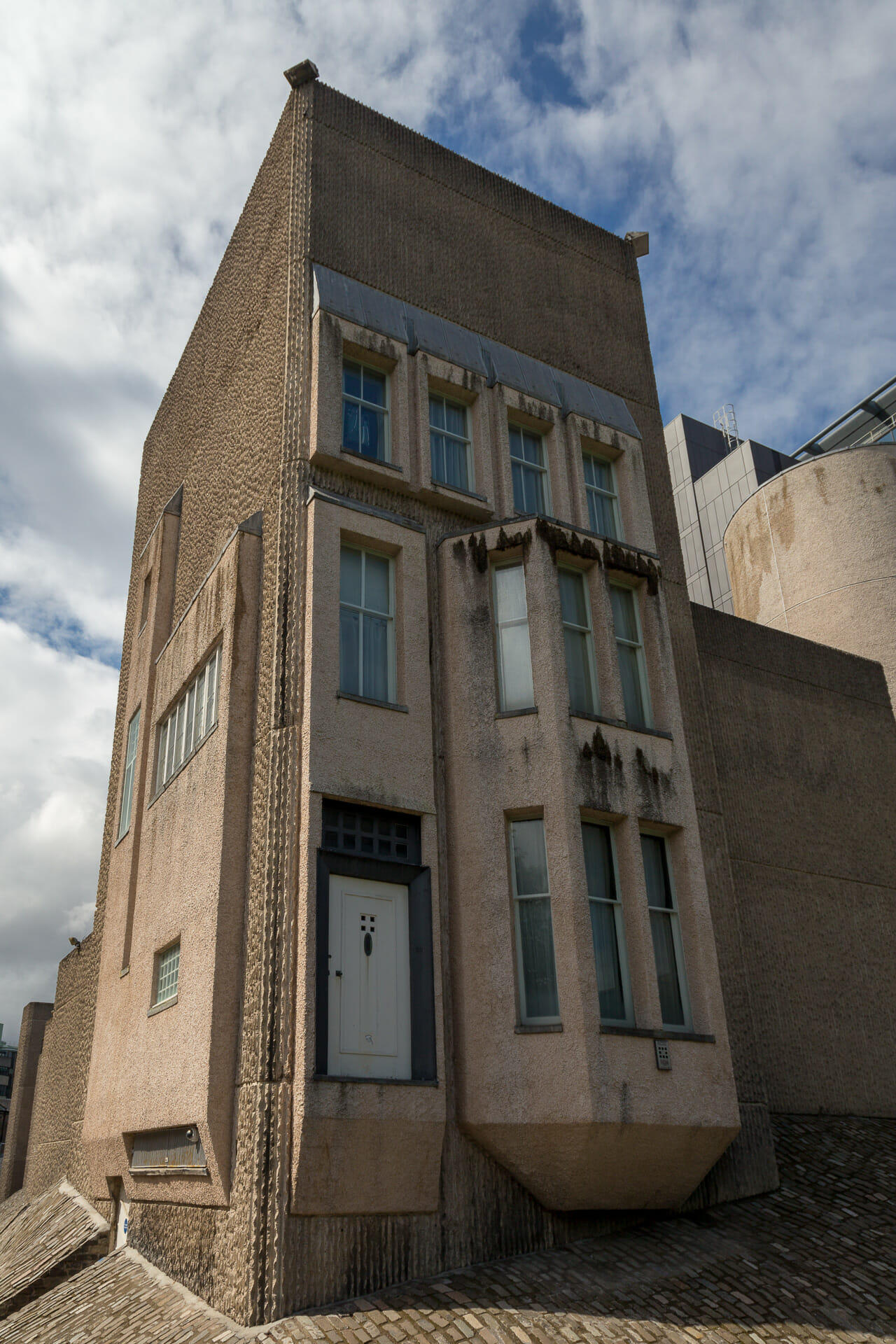
The house where Mr and Mrs Mackintosh lived was demolished in the 1960s. However, the interior was saved. The Hunterian Art Museum, just opposite Glasgow University, has reassembled the interior – and has done so exactly, so that the light falls in the same way and all the rooms have the same sequence. In Glasgow, this is certainly one of the most interesting ways to experience the work of the artist couple.
Visit theMackintosh House website.
Glasgow School of Art, 1899 & 1909
Certainly one of his most important works: the building of the school where he himself learnt and worked. The first part was completed in 1899, the second in 1909. It was badly damaged by fire in 2014 and again in 2018. It is unclear when it will reopen.
Map: Where to visit the works
Here is a Google map with the most important sights of Charles Rennie Mackintosh in and around Glasgow. Including some smaller and lesser-known ones.